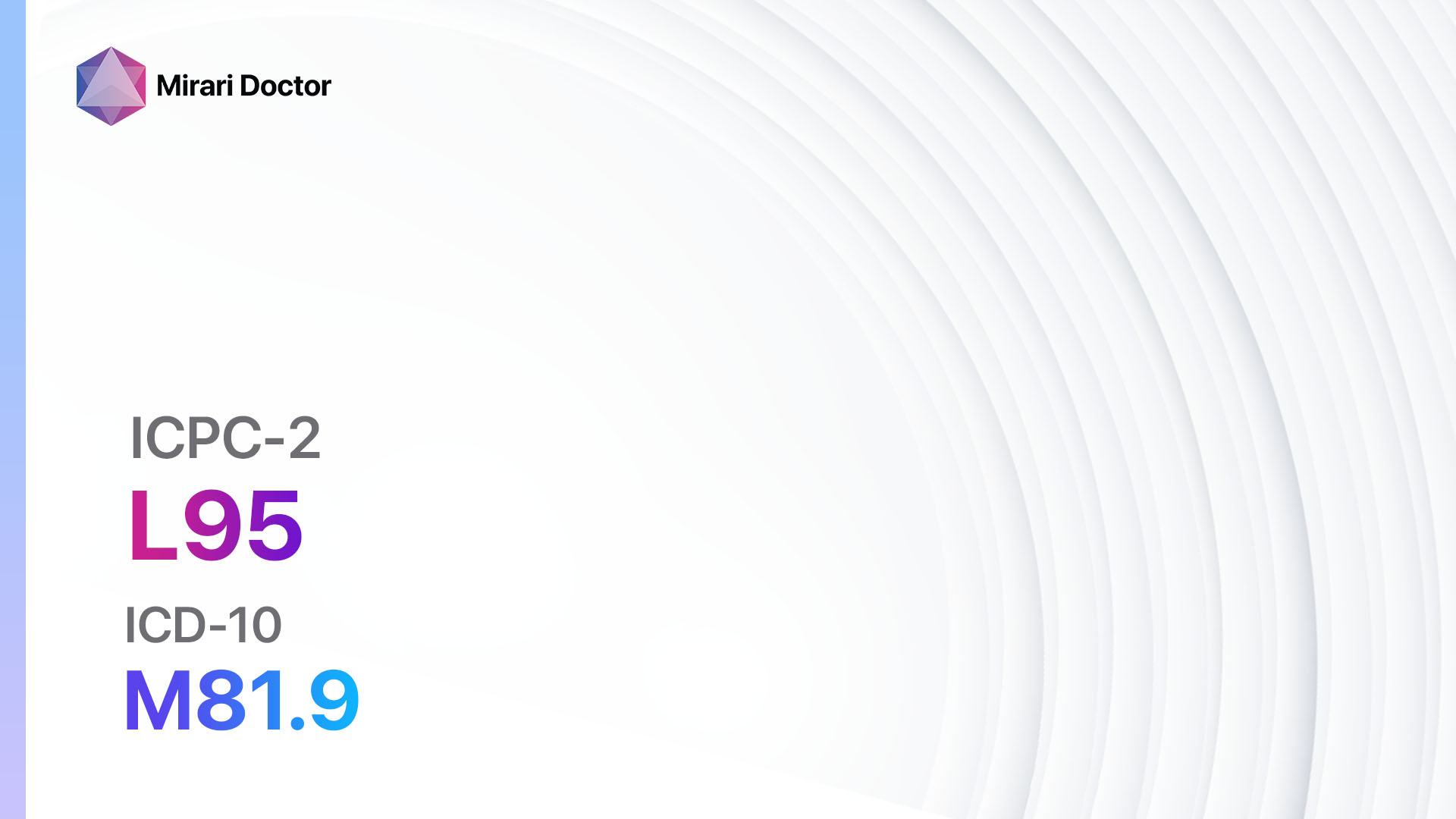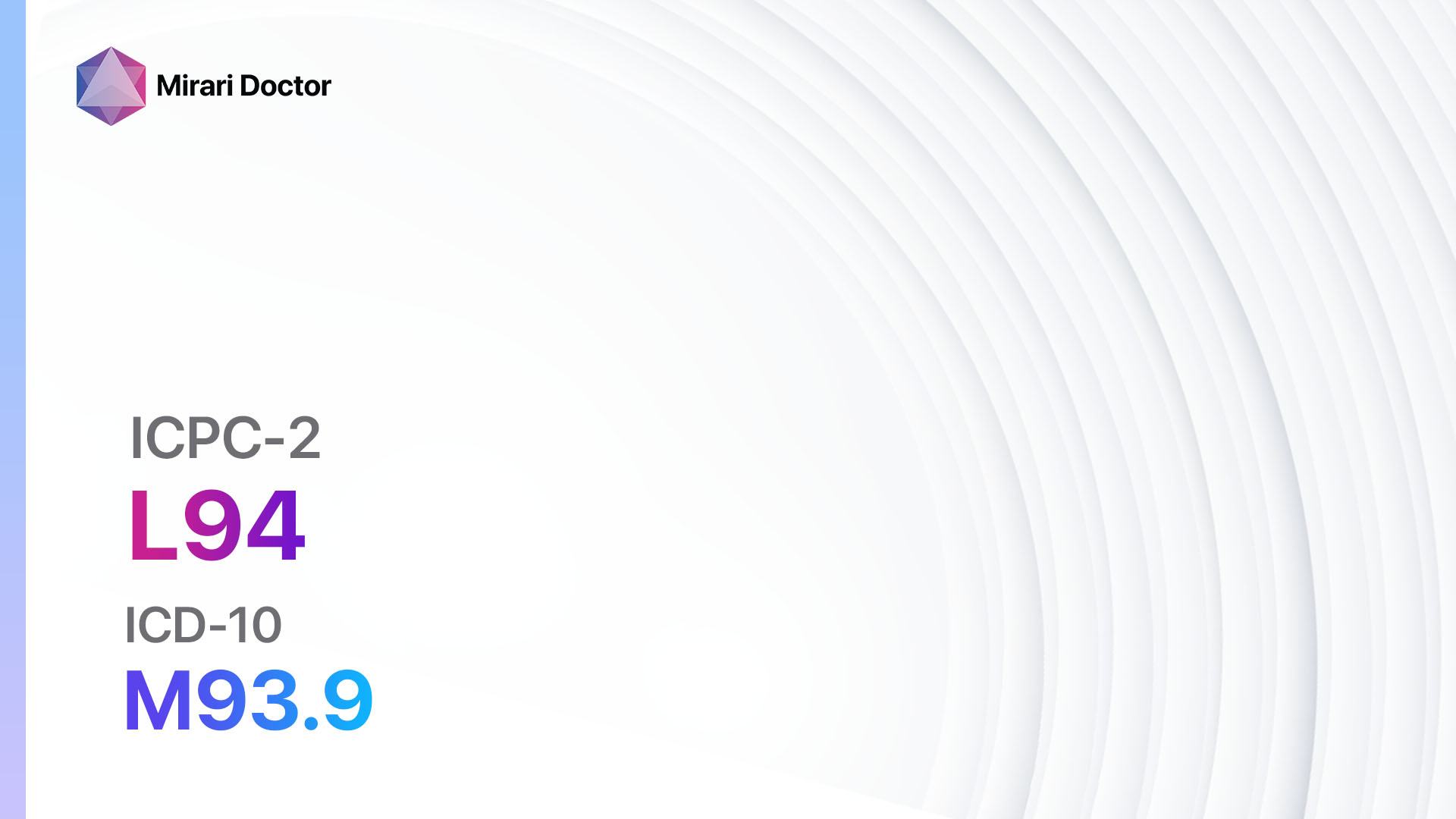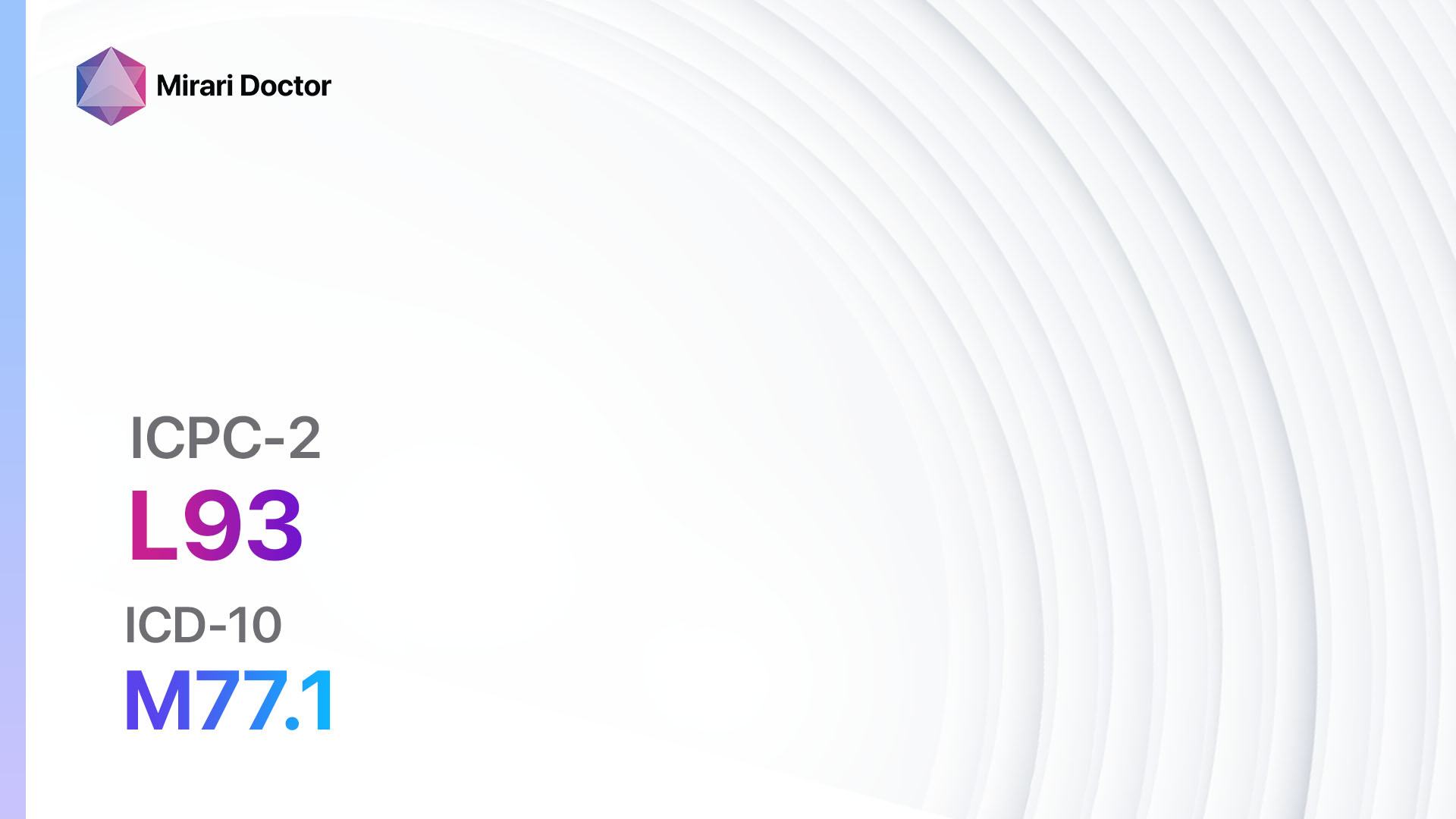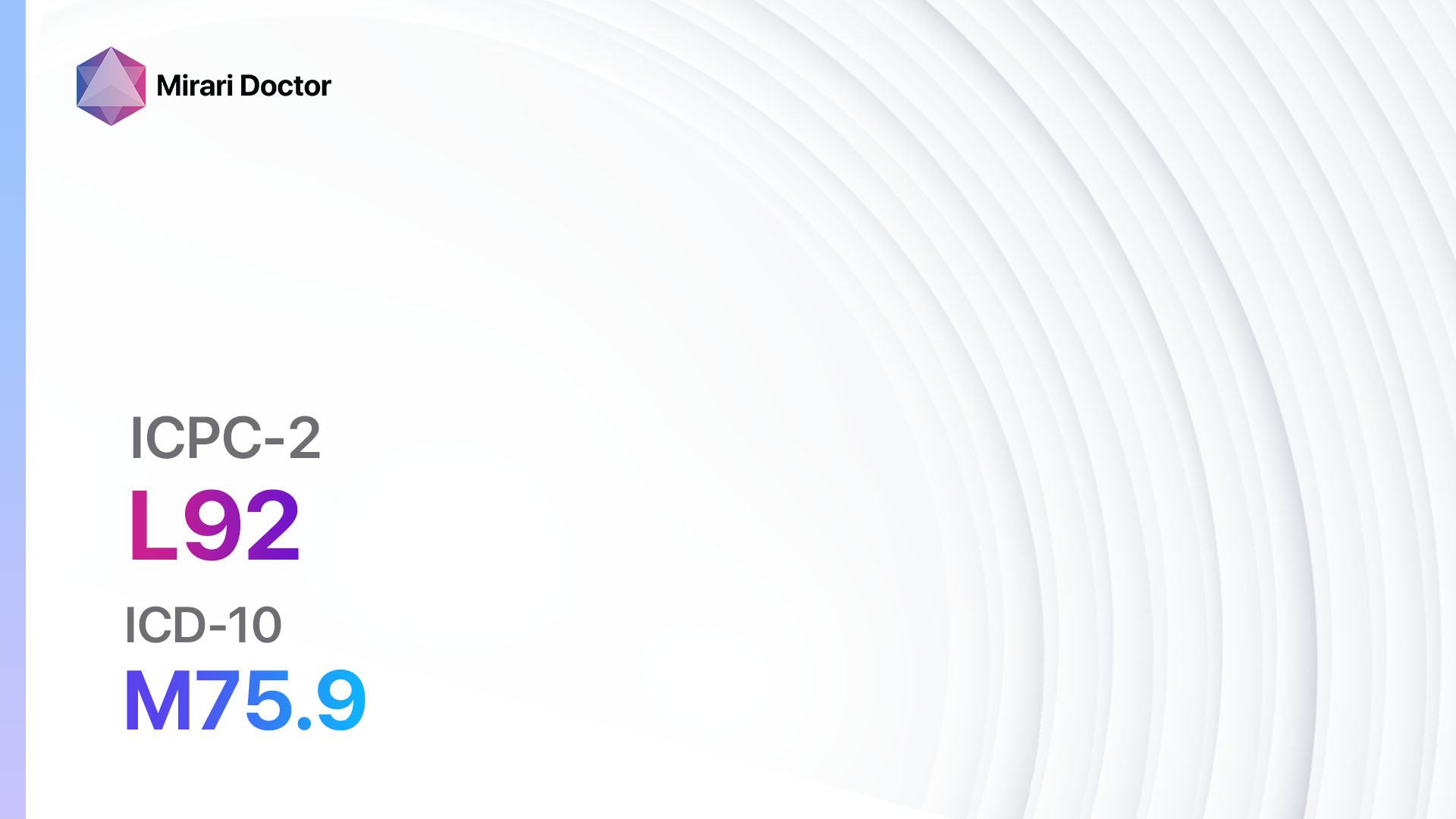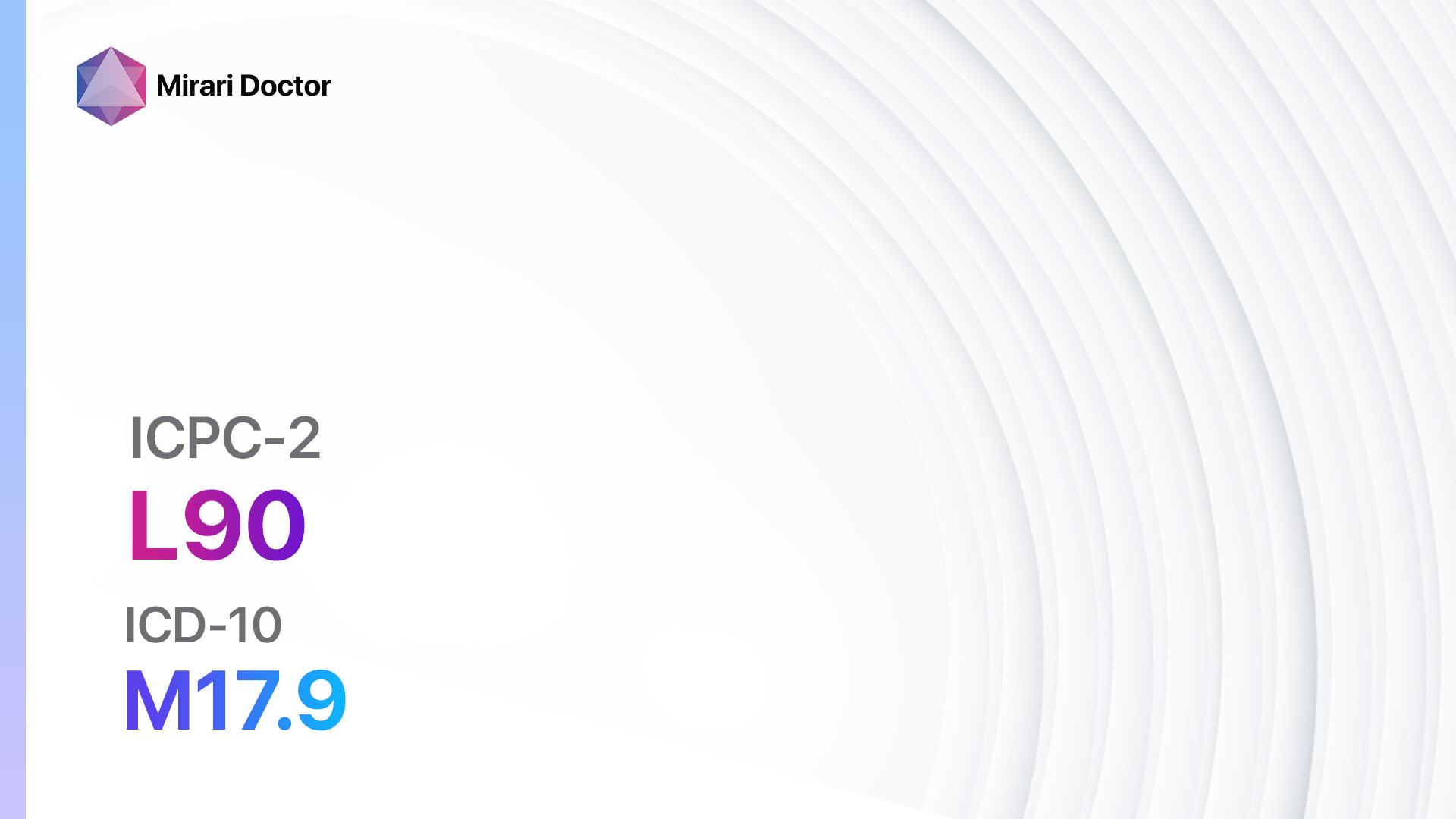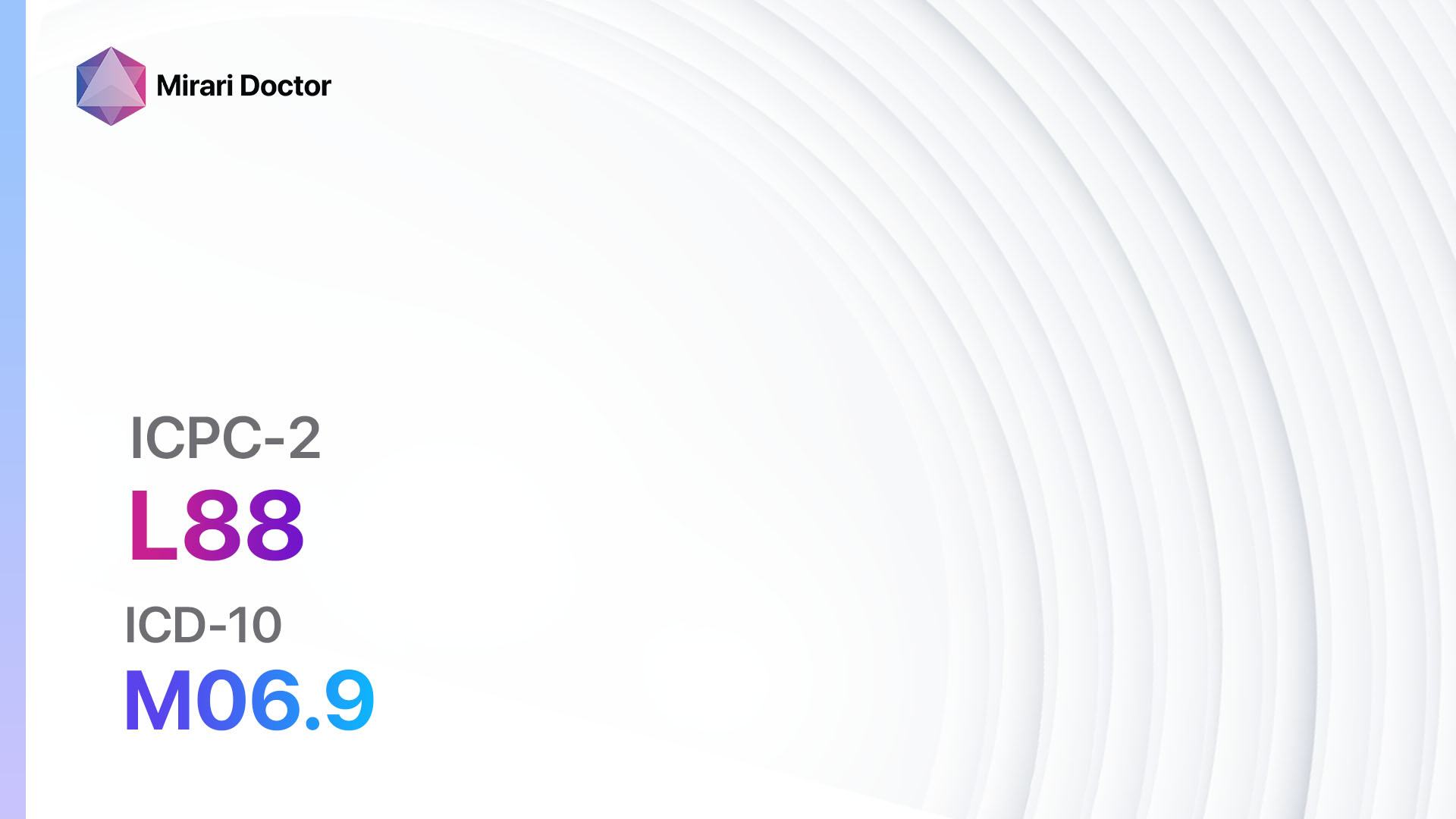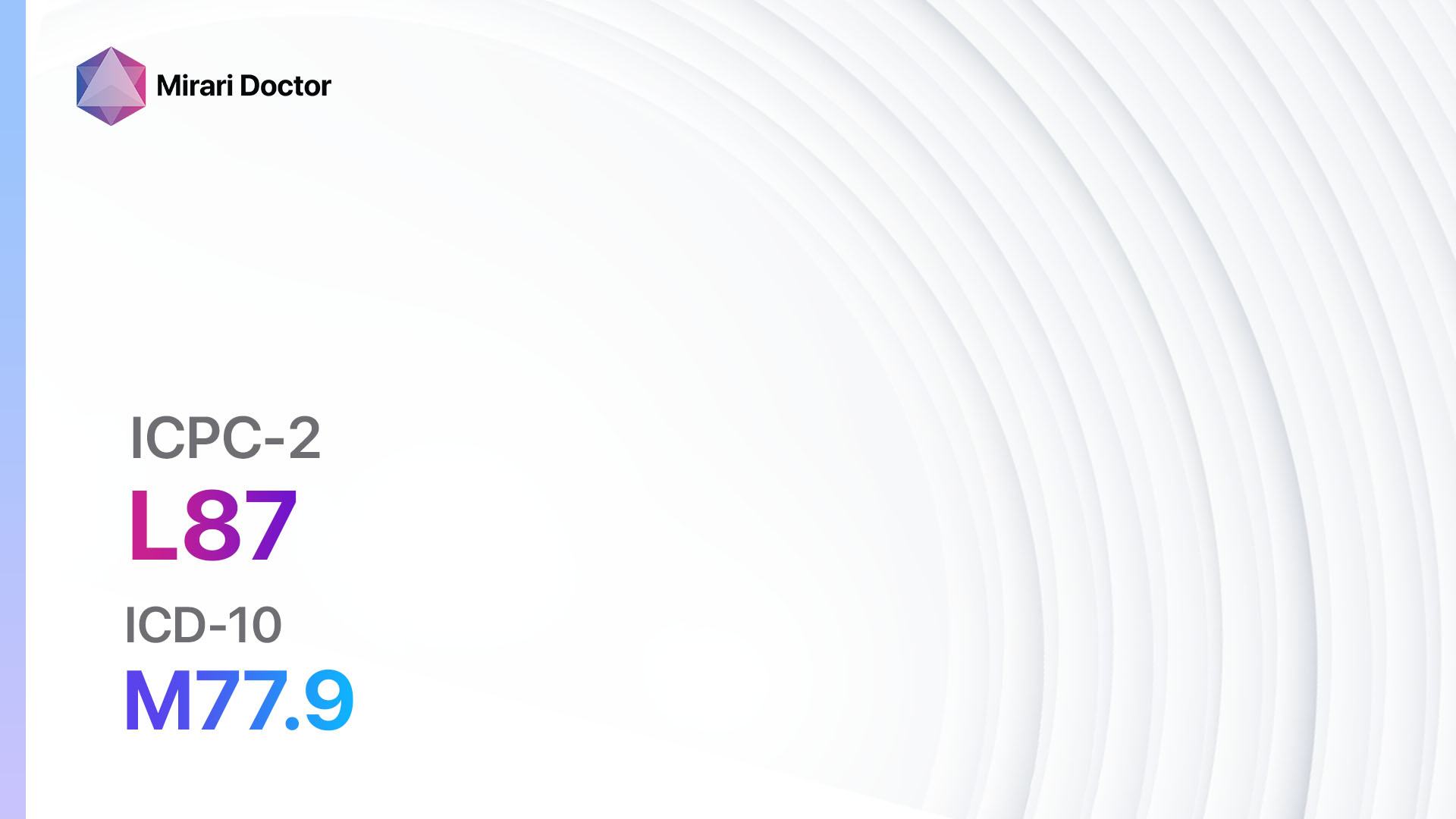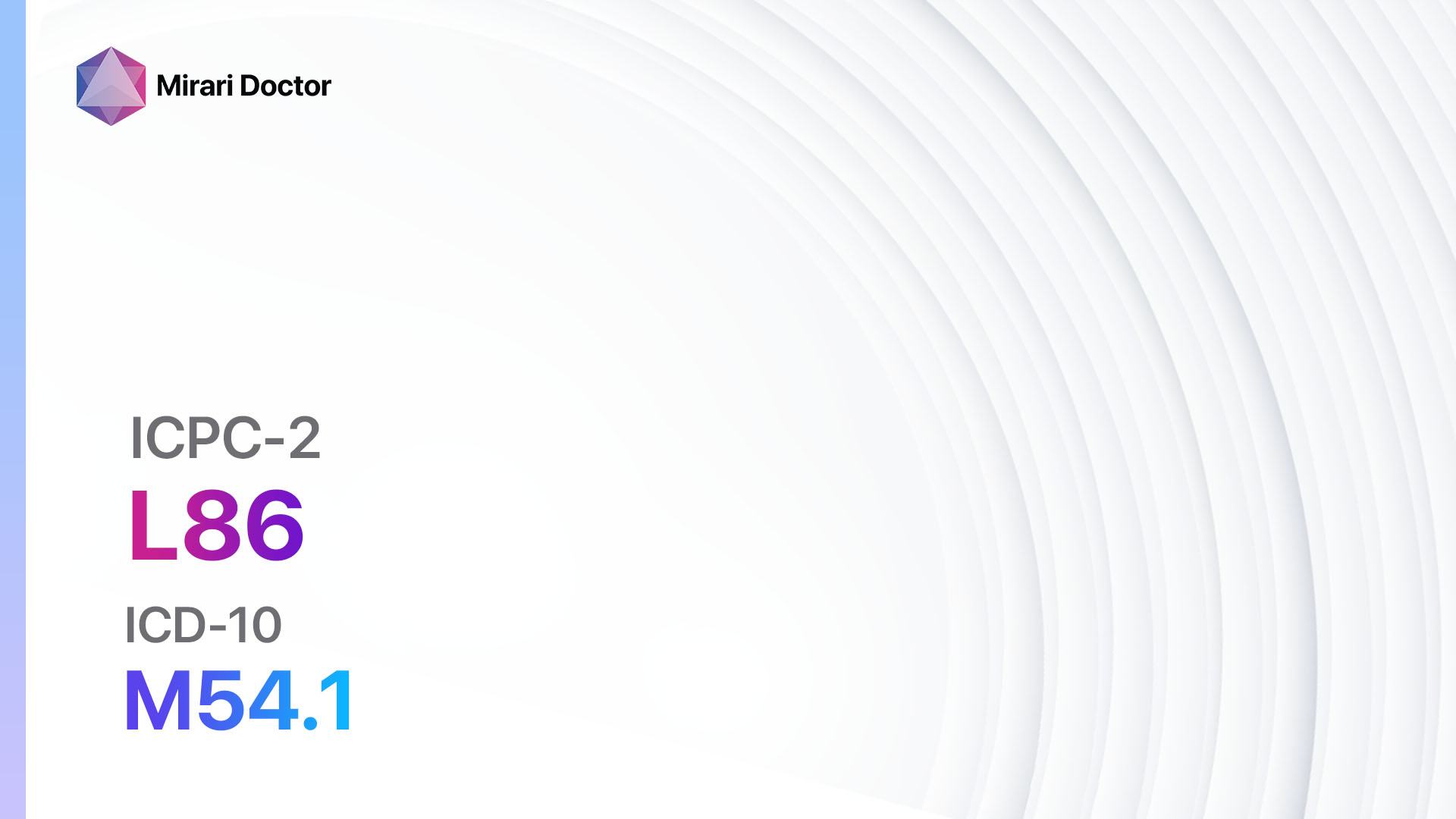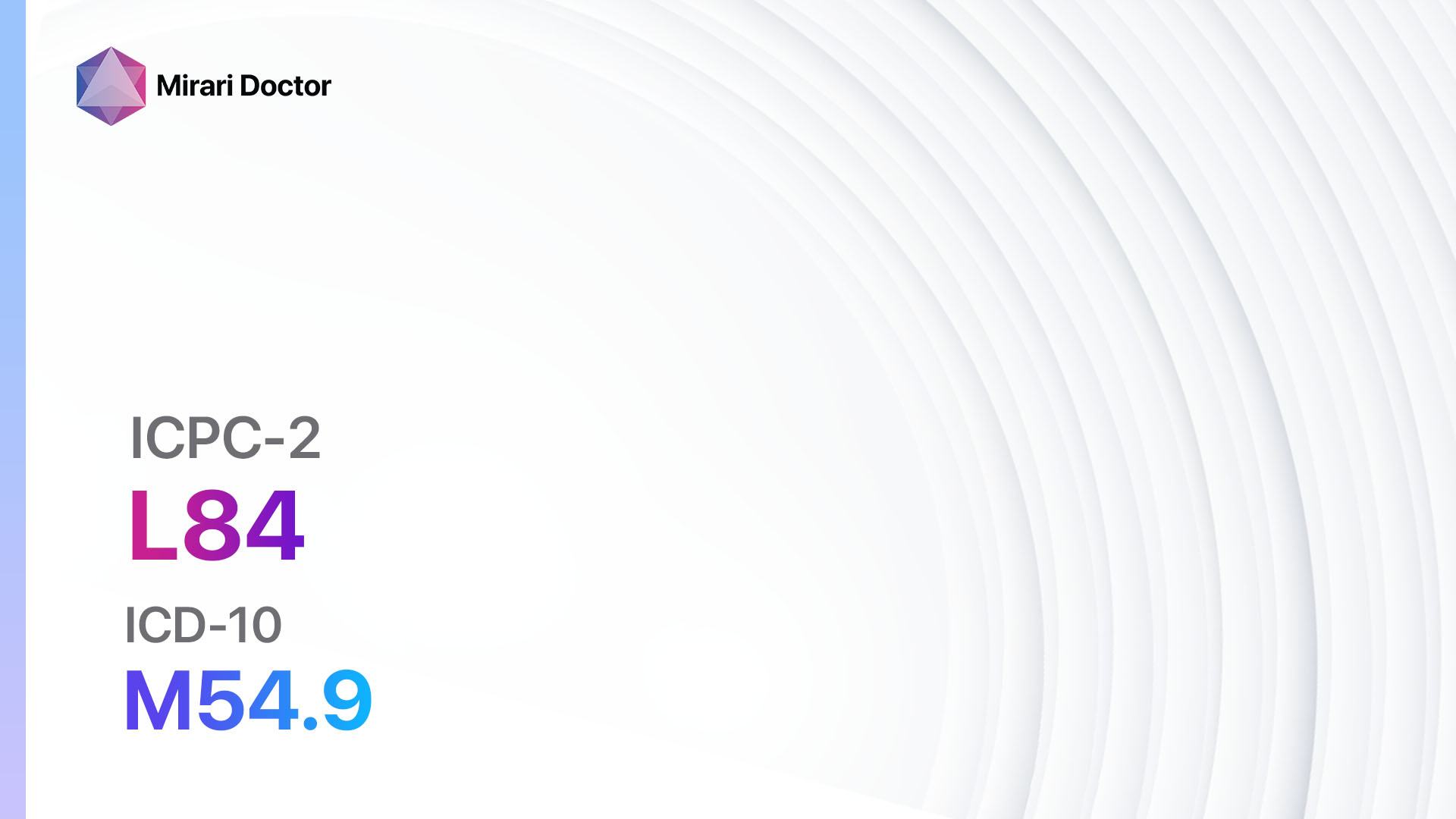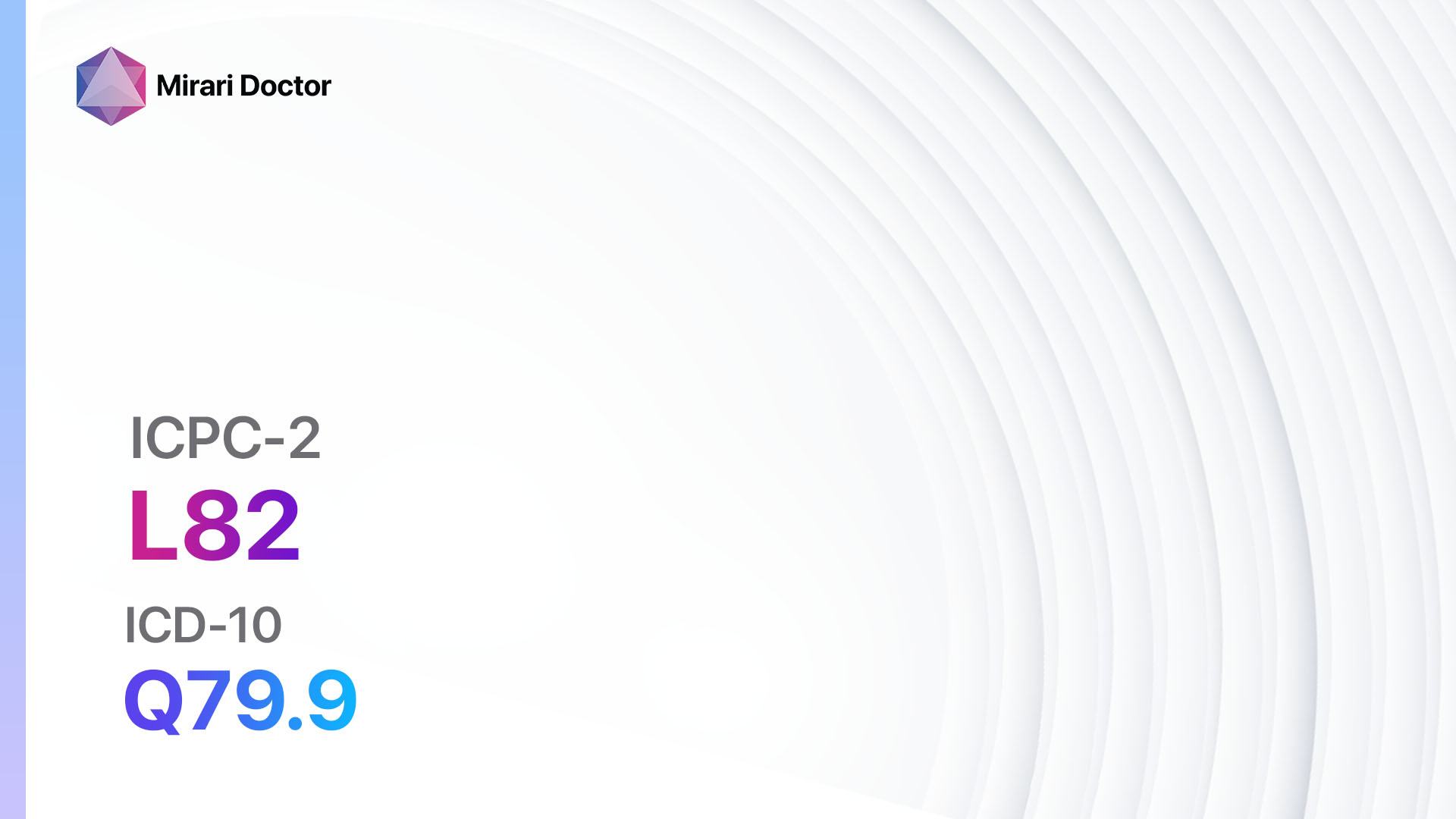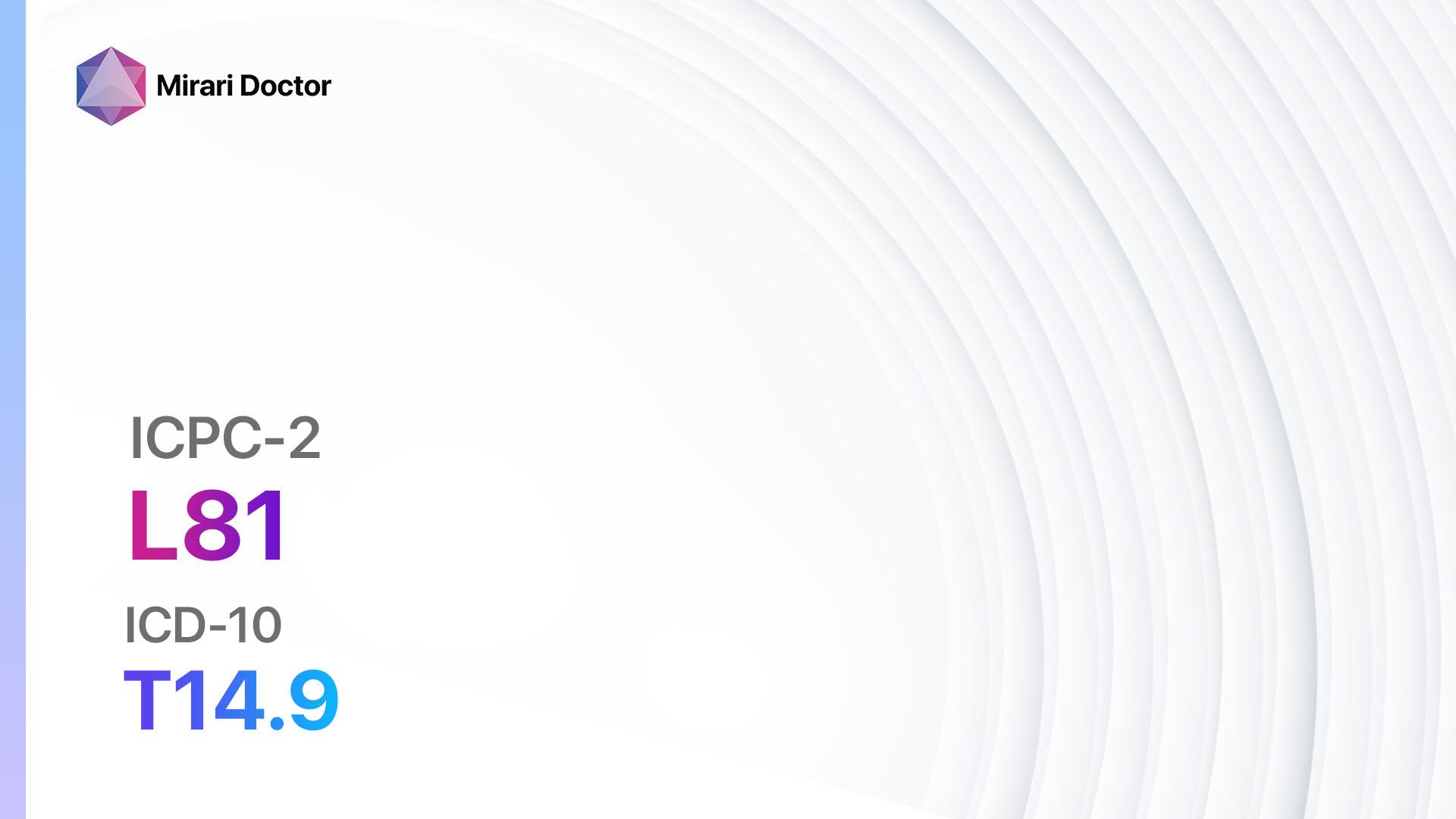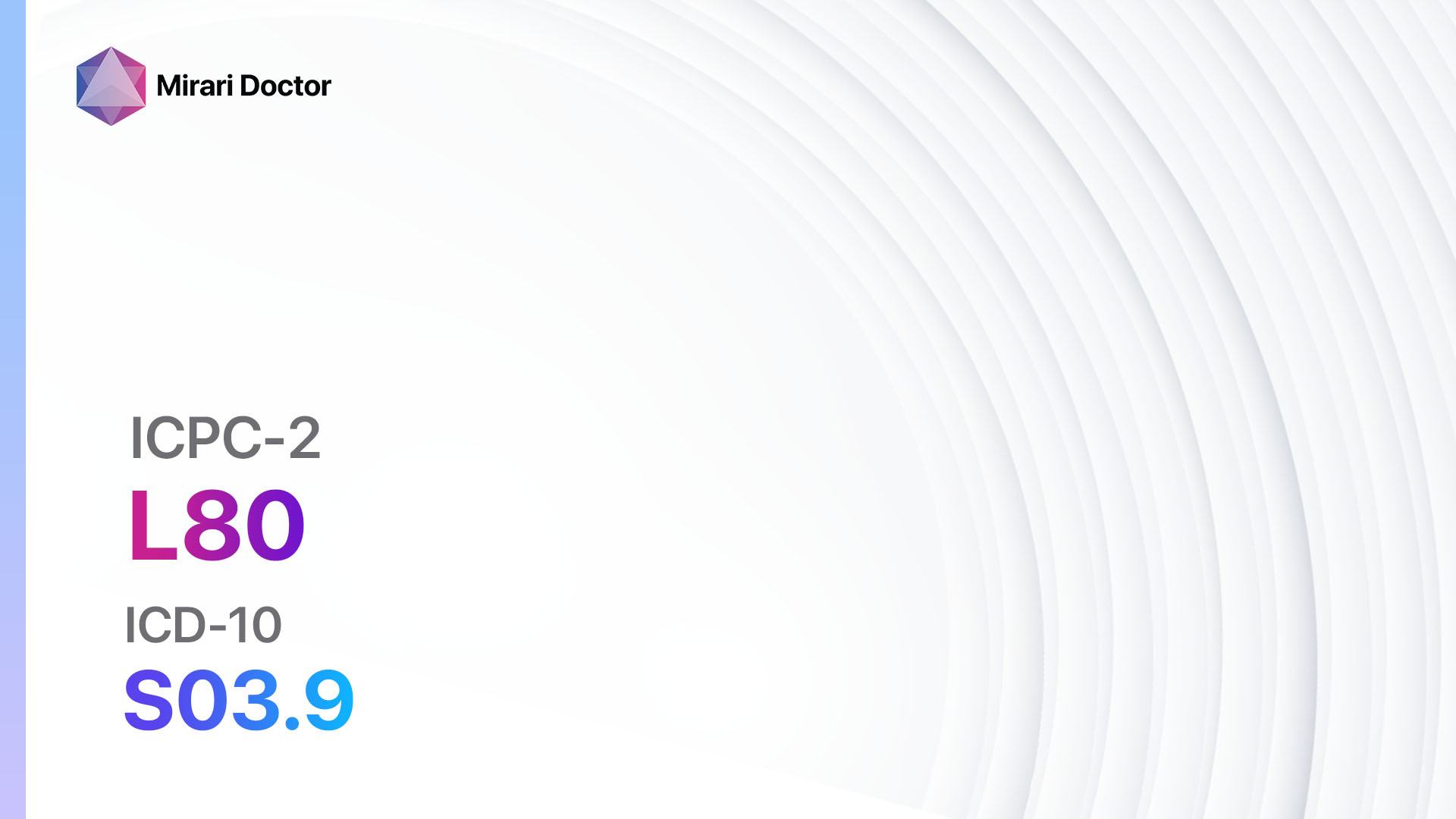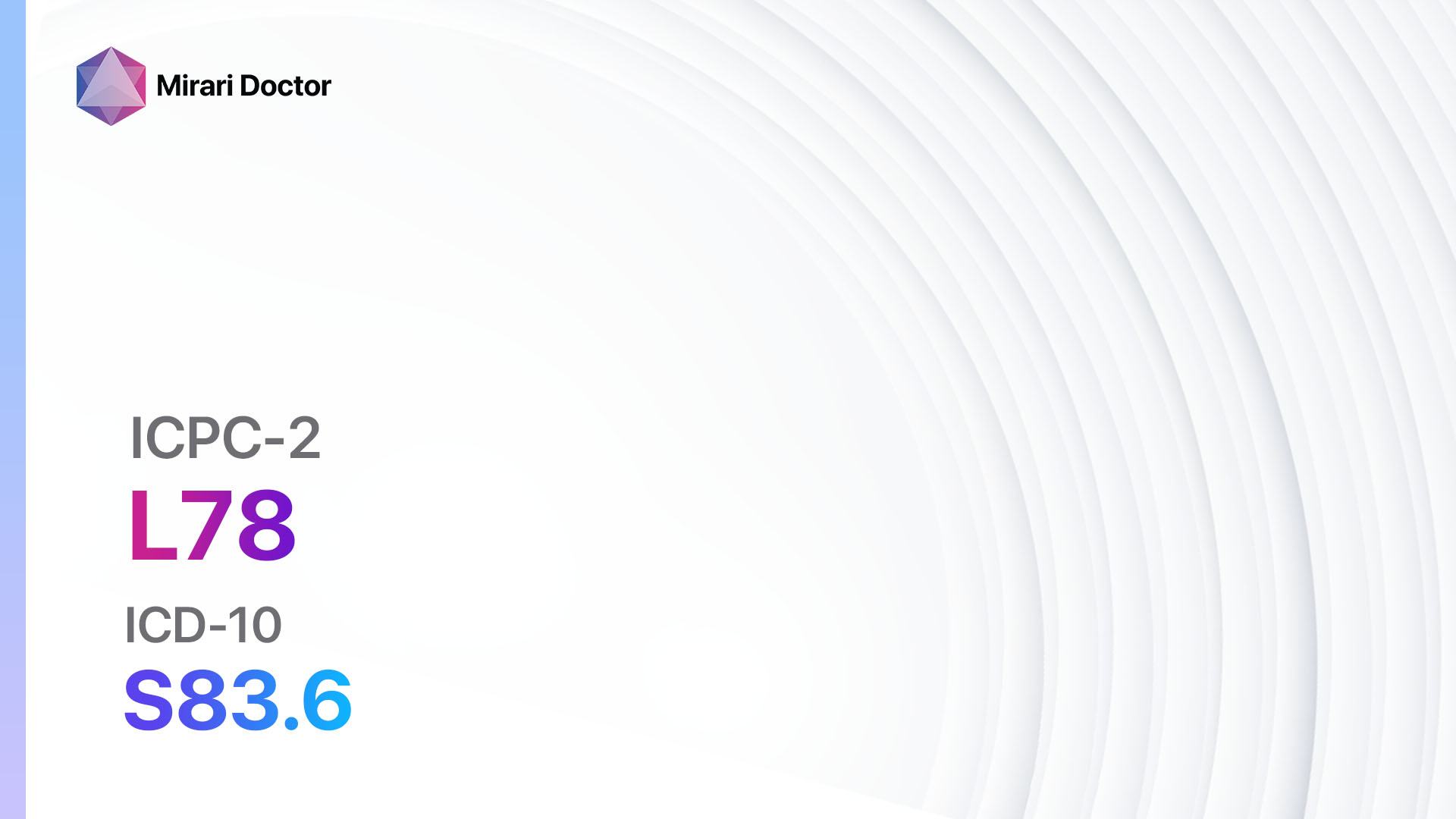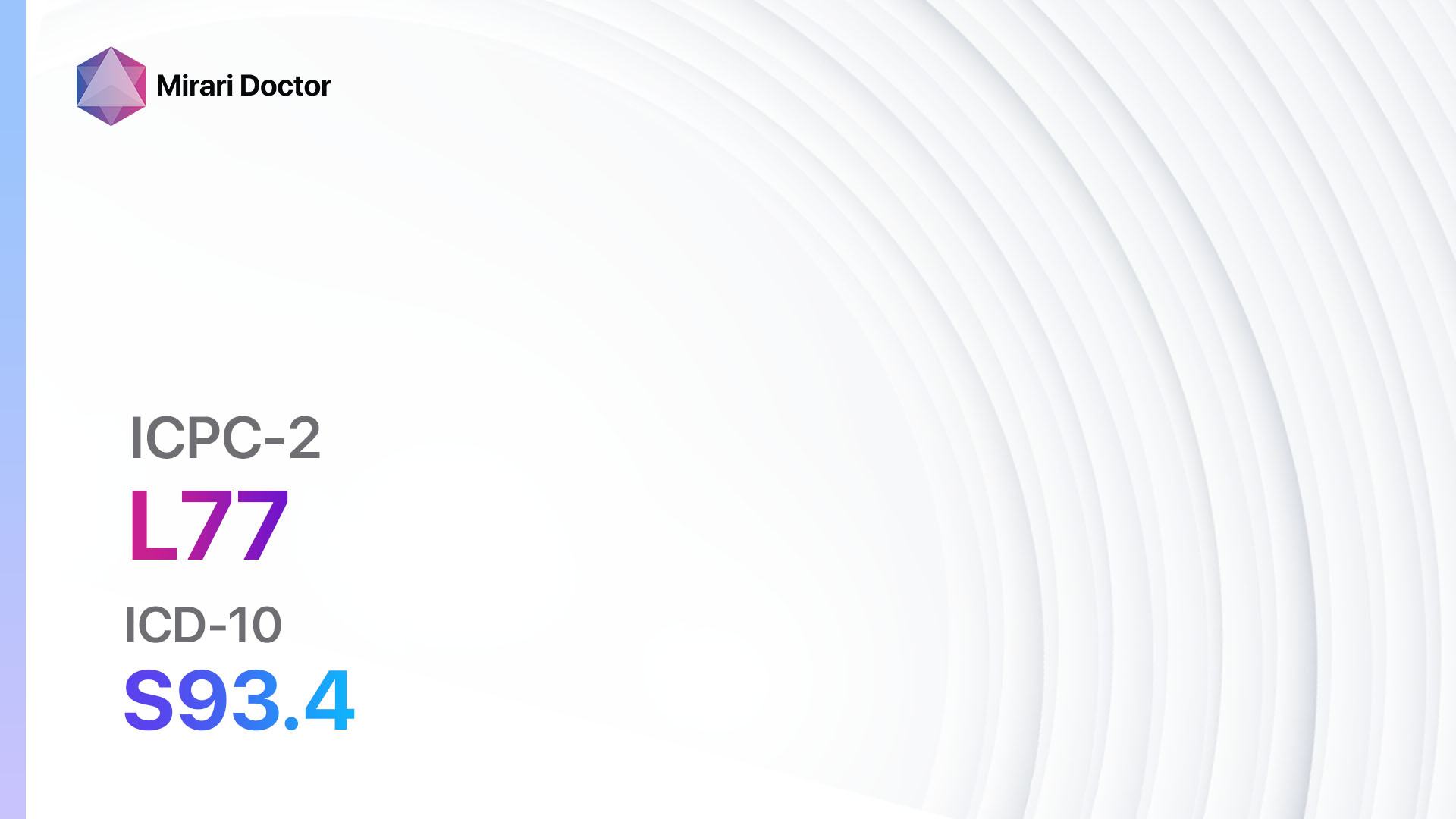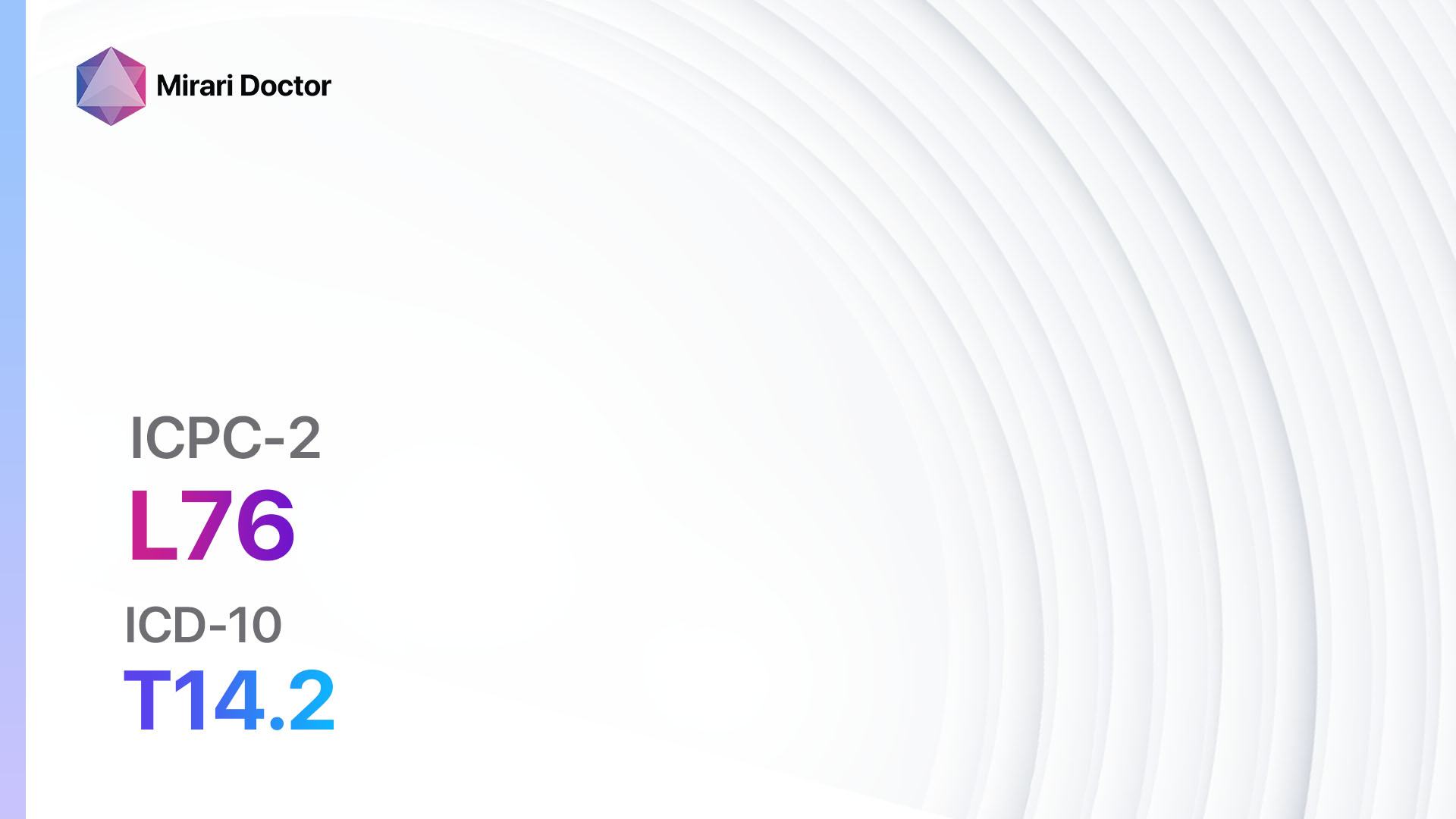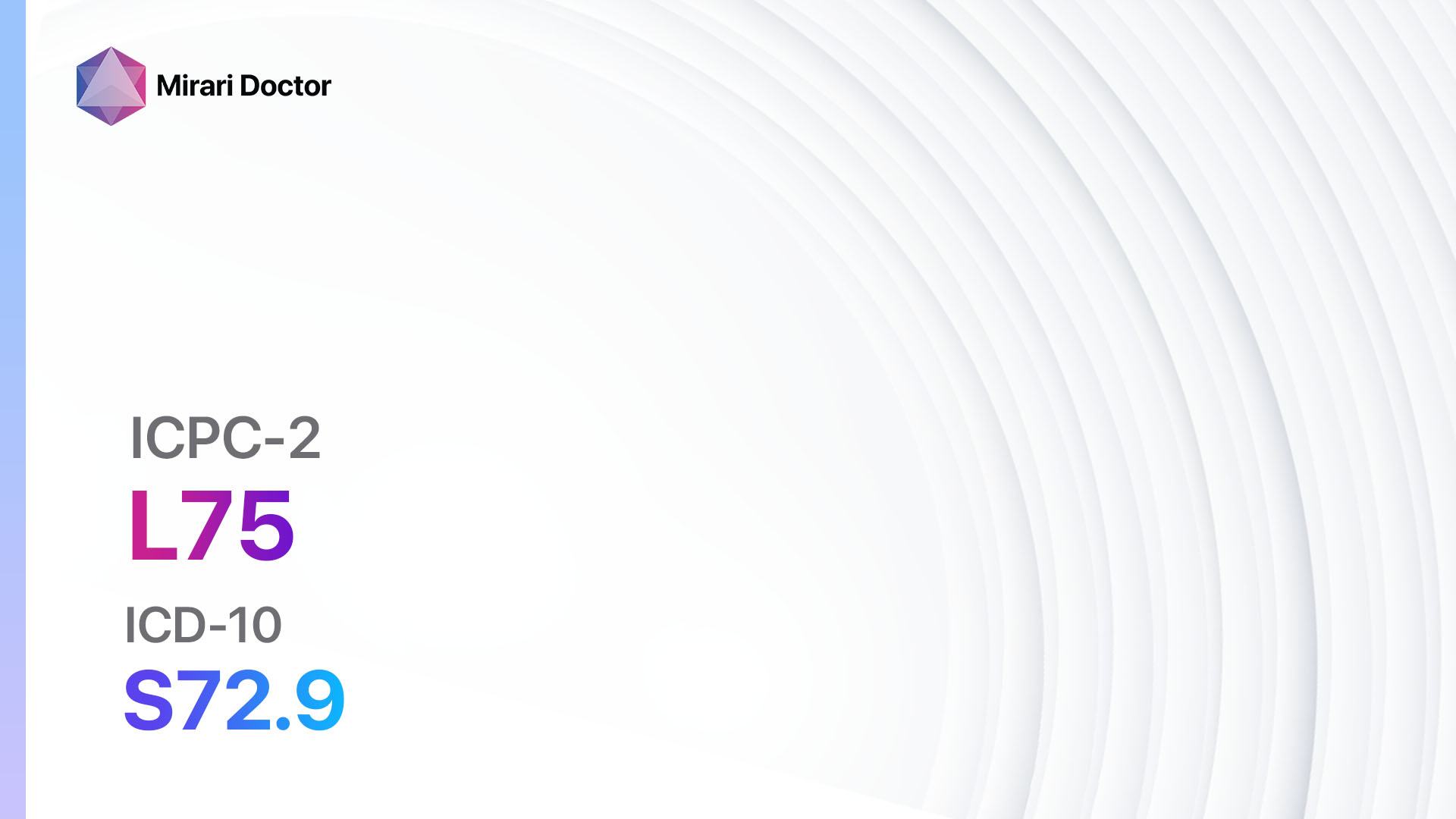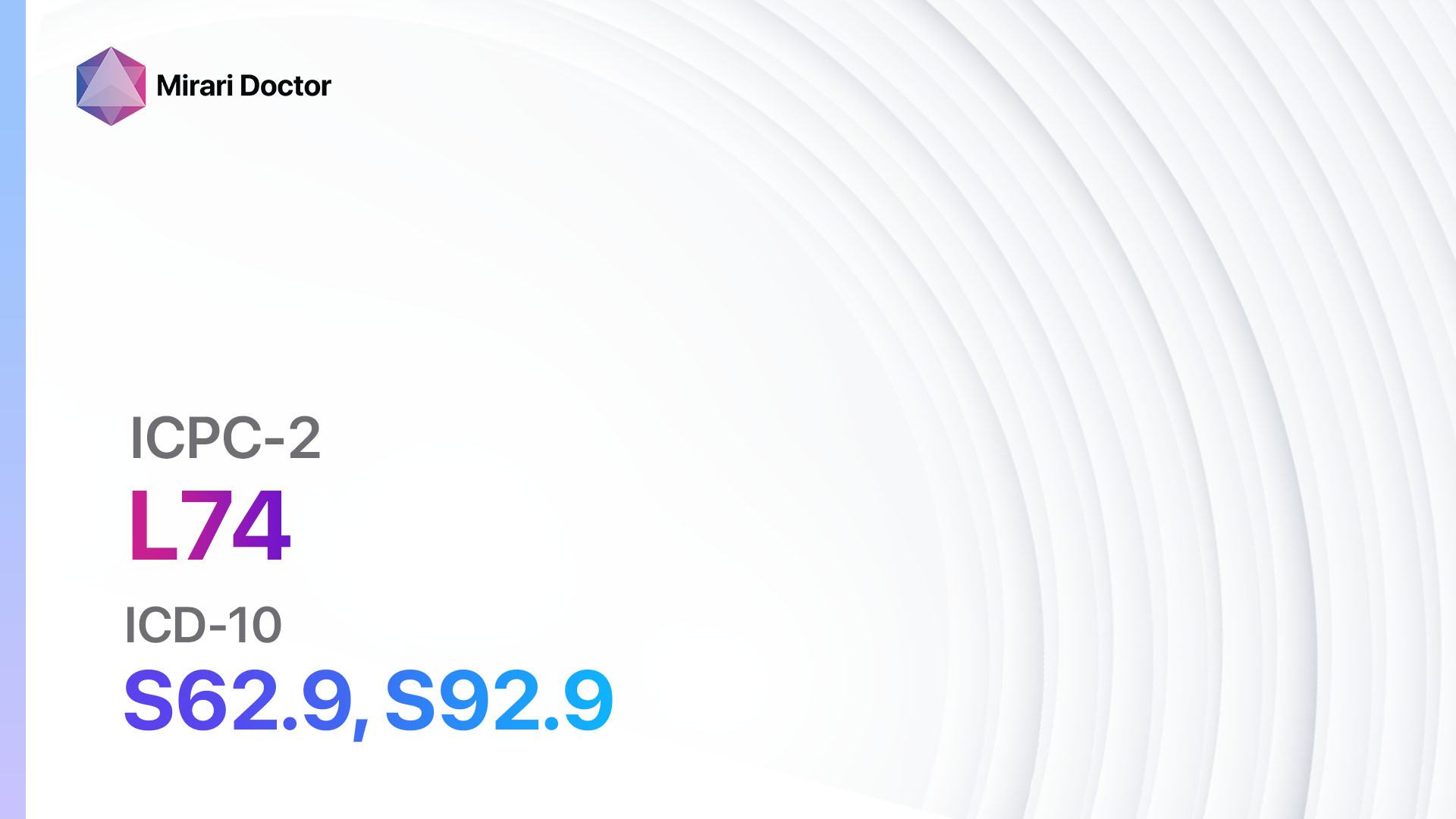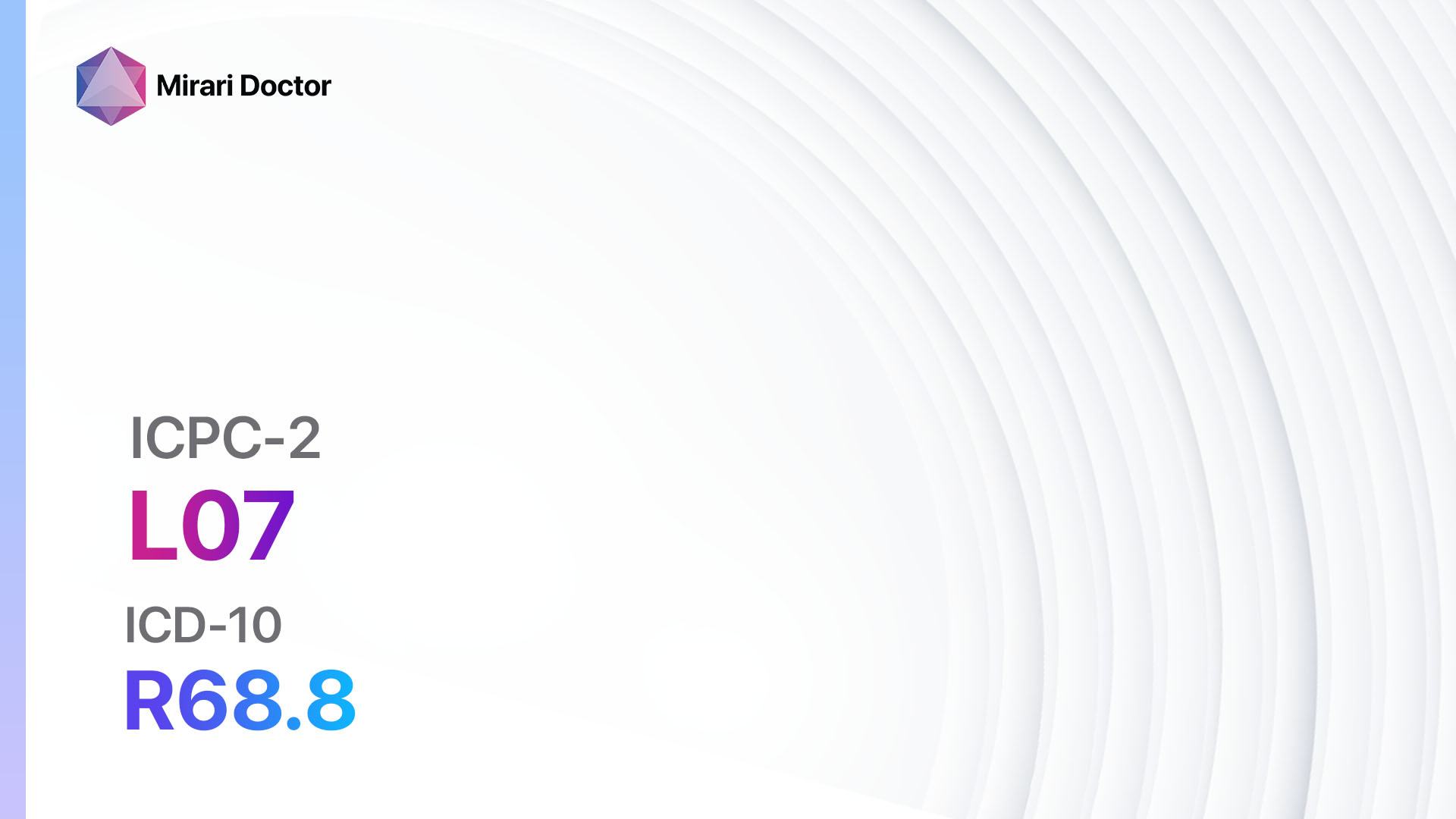
Introduction
Jaw symptoms or complaints can be indicative of various underlying conditions, ranging from dental issues to temporomandibular joint disorders. These symptoms can significantly impact a person’s quality of life, affecting their ability to eat, speak, and perform daily activities[1]. The aim of this guide is to provide healthcare professionals with a comprehensive approach to diagnosing and managing jaw symptoms, including the use of diagnostic tests, medications, surgical procedures, and alternative interventions.
Codes
- ICPC-2 Code: L07 Jaw symptom/complaint
- ICD-10 Code: R68.8 Other specified general symptoms and signs
Symptoms
- Jaw pain: Dull, aching, or sharp pain in the jaw area[2].
- Jaw stiffness: Difficulty in opening or closing the mouth fully[3].
- Jaw clicking or popping: Audible sounds when moving the jaw[4].
- Jaw locking: Inability to fully open or close the mouth[5].
- Jaw swelling: Swelling or inflammation in the jaw area[6].
- Jaw numbness or tingling: Sensation of numbness or tingling in the jaw[7].
Causes
- Dental issues: Tooth decay, gum disease, or dental abscess[8].
- Temporomandibular joint (TMJ) disorders: Dysfunction or inflammation of the TMJ[9].
- Jaw fractures: Trauma or injury to the jawbone[10].
- Infections: Bacterial or viral infections affecting the jaw area.
- Arthritis: Rheumatoid arthritis or osteoarthritis affecting the jaw joint.
- Tumors: Benign or malignant growths in the jawbone or surrounding tissues.
Diagnostic Steps
Medical History
- Gather information about the onset, duration, and severity of jaw symptoms.
- Inquire about any recent trauma or injury to the jaw.
- Ask about any associated symptoms, such as tooth pain or difficulty chewing.
- Assess for any risk factors, such as a history of dental issues or arthritis.
Physical Examination
- Inspect the jaw area for any visible swelling, redness, or deformities.
- Palpate the jaw joint and surrounding muscles for tenderness or abnormalities.
- Assess the range of motion of the jaw, including opening and closing, lateral movements, and protrusion.
- Check for any clicking, popping, or locking of the jaw during movement.
Laboratory Tests
- Complete blood count (CBC): To assess for signs of infection or inflammation.
- Erythrocyte sedimentation rate (ESR) or C-reactive protein (CRP): To evaluate the presence of systemic inflammation.
- Dental X-rays: To identify any dental issues, such as tooth decay or abscesses.
Diagnostic Imaging
- Panoramic X-ray: Provides a comprehensive view of the entire jaw, including the teeth, jawbone, and TMJ.
- Cone beam computed tomography (CBCT): Produces detailed 3D images of the jaw and TMJ.
- Magnetic resonance imaging (MRI): Useful for evaluating soft tissues, such as the TMJ disc or surrounding muscles.
Other Tests
- Temporomandibular joint arthroscopy: Invasive procedure to directly visualize the TMJ and assess for any abnormalities.
- Electromyography (EMG): Measures the electrical activity of the jaw muscles during movement.
- Joint aspiration: Removal of fluid from the TMJ for analysis, particularly in cases of suspected infection or inflammation.
Follow-up and Patient Education
- Schedule a follow-up appointment to review the results of diagnostic tests and discuss treatment options.
- Provide patient education on self-care measures, such as jaw exercises, heat or cold therapy, and stress management techniques.
- Refer the patient to a dentist, oral surgeon, or TMJ specialist for further evaluation and management if necessary.
Possible Interventions
Traditional Interventions
Medications:
Top 5 drugs for Jaw symptom/complaint:
- Nonsteroidal anti-inflammatory drugs (NSAIDs) (e.g., Ibuprofen, Naproxen):
- Cost: Generic versions can be $3-$15/month.
- Contraindications: Active peptic ulcer disease, history of gastrointestinal bleeding, severe kidney disease.
- Side effects: Upset stomach, heartburn, increased risk of bleeding.
- Severe side effects: Gastrointestinal bleeding, kidney damage, allergic reactions.
- Drug interactions: Anticoagulants, corticosteroids, selective serotonin reuptake inhibitors (SSRIs).
- Warning: Prolonged use may increase the risk of cardiovascular events.
- Muscle relaxants (e.g., Cyclobenzaprine, Methocarbamol):
- Cost: Generic versions can be $4-$20/month.
- Contraindications: Glaucoma, urinary retention, liver disease.
- Side effects: Drowsiness, dizziness, dry mouth.
- Severe side effects: Severe allergic reactions, hallucinations, seizures.
- Drug interactions: Sedatives, opioids, antidepressants.
- Warning: May cause drowsiness, avoid driving or operating heavy machinery.
- Tricyclic antidepressants (e.g., Amitriptyline, Nortriptyline):
- Cost: Generic versions can be $4-$20/month.
- Contraindications: Recent heart attack, narrow-angle glaucoma, urinary retention.
- Side effects: Dry mouth, constipation, drowsiness.
- Severe side effects: Increased risk of suicidal thoughts, serotonin syndrome.
- Drug interactions: Monoamine oxidase inhibitors (MAOIs), selective serotonin reuptake inhibitors (SSRIs).
- Warning: May take several weeks to achieve therapeutic effect.
- Corticosteroids (e.g., Prednisone, Dexamethasone):
- Cost: Generic versions can be $4-$20/month.
- Contraindications: Active infections, systemic fungal infections, uncontrolled hypertension.
- Side effects: Increased appetite, weight gain, mood changes.
- Severe side effects: Increased risk of infections, osteoporosis, adrenal suppression.
- Drug interactions: Nonsteroidal anti-inflammatory drugs (NSAIDs), anticoagulants, antidiabetic medications.
- Warning: Prolonged use may require gradual tapering to avoid adrenal insufficiency.
- Antibiotics (e.g., Amoxicillin, Clindamycin):
- Cost: Generic versions can be $4-$20/month.
- Contraindications: Allergy to penicillin or other antibiotics, history of severe gastrointestinal disease.
- Side effects: Upset stomach, diarrhea, rash.
- Severe side effects: Severe allergic reactions, Clostridium difficile infection.
- Drug interactions: Oral contraceptives, anticoagulants, antacids.
- Warning: Use with caution in patients with renal impairment.
Alternative Drugs:
- Anticonvulsants (e.g., Gabapentin, Pregabalin): Can be used for neuropathic pain associated with jaw symptoms. Cost: $10-$50/month.
- Benzodiazepines (e.g., Diazepam, Clonazepam): May help with muscle relaxation and anxiety associated with jaw symptoms. Cost: $4-$20/month.
- Botulinum toxin injections (e.g., Botox): Can be used for muscle spasm or bruxism-related jaw symptoms. Cost: $300-$600 per treatment.
- Topical analgesics (e.g., Lidocaine gel, Capsaicin cream): Provide localized pain relief for jaw symptoms. Cost: $10-$30 per tube.
Surgical Procedures:
- Arthrocentesis: Minimally invasive procedure to flush out the TMJ with sterile fluid. Cost: $1,500 to $3,000.
- Arthroscopy: Invasive procedure to visualize and treat TMJ disorders using a small camera and specialized instruments. Cost: $5,000 to $10,000.
- Open joint surgery: Surgical intervention to repair or replace damaged TMJ components. Cost: $10,000 to $20,000.
Alternative Interventions
- Acupuncture: May help reduce pain and improve jaw function. Cost: $60-$120 per session.
- Chiropractic care: Can help with jaw alignment and muscle tension. Cost: $50-$200 per session.
- Physical therapy: Exercises and manual techniques to improve jaw mobility and reduce pain. Cost: $50-$150 per session.
- Stress management techniques: Relaxation exercises, meditation, or counseling to reduce stress-related jaw symptoms. Cost: Varies depending on the specific technique or provider.
- Herbal supplements: Some herbs, such as chamomile or valerian root, may have calming effects and help with jaw symptoms. Cost: Varies depending on the specific supplement.
Lifestyle Interventions
- Dietary modifications: Avoiding hard or chewy foods that may exacerbate jaw symptoms. Cost: Varies depending on individual food choices.
- Heat or cold therapy: Applying warm or cold compresses to the jaw area to reduce pain and inflammation. Cost: Varies depending on the specific therapy used.
- Jaw exercises: Stretching and strengthening exercises to improve jaw mobility and reduce muscle tension. Cost: Free.
- Oral splints or mouthguards: Custom-fitted devices to help align the jaw and reduce grinding or clenching. Cost: $300-$800.
- Stress reduction techniques: Relaxation techniques, such as deep breathing or meditation, to reduce jaw tension. Cost: Varies depending on the specific technique or provider.
It is important to note that the cost ranges provided are approximate and may vary depending on the location and availability of the interventions.
Mirari Cold Plasma Alternative Intervention
Understanding Mirari Cold Plasma
- Safe and Non-Invasive Treatment: Mirari Cold Plasma is a safe and non-invasive treatment option for various skin conditions. It does not require incisions, minimizing the risk of scarring, bleeding, or tissue damage.
- Efficient Extraction of Foreign Bodies: Mirari Cold Plasma facilitates the removal of foreign bodies from the skin by degrading and dissociating organic matter, allowing easier access and extraction.
- Pain Reduction and Comfort: Mirari Cold Plasma has a local analgesic effect, providing pain relief during the treatment, making it more comfortable for the patient.
- Reduced Risk of Infection: Mirari Cold Plasma has antimicrobial properties, effectively killing bacteria and reducing the risk of infection.
- Accelerated Healing and Minimal Scarring: Mirari Cold Plasma stimulates wound healing and tissue regeneration, reducing healing time and minimizing the formation of scars.
Mirari Cold Plasma Prescription
Video instructions for using Mirari Cold Plasma Device – L07 Jaw symptom/complaint (ICD-10:R68.8)
| Mild | Moderate | Severe |
| Mode setting: 2 (Wound Healing) Location: 0 (Localized) Morning: 15 minutes, Evening: 15 minutes |
Mode setting: 2 (Wound Healing) Location: 0 (Localized) Morning: 30 minutes, Lunch: 30 minutes, Evening: 30 minutes |
Mode setting: 2 (Wound Healing) Location: 0 (Localized) Morning: 30 minutes, Lunch: 30 minutes, Evening: 30 minutes |
| Mode setting: 2 (Wound Healing) Location: 0 (Localized) Morning: 15 minutes, Evening: 15 minutes |
Mode setting: 2 (Wound Healing) Location: 0 (Localized) Morning: 30 minutes, Lunch: 30 minutes, Evening: 30 minutes |
Mode setting: 2 (Wound Healing) Location: 0 (Localized) Morning: 30 minutes, Lunch: 30 minutes, Evening: 30 minutes |
| Mode setting: 7 (Immunotherapy) Location: 1 (Sacrum) Morning: 15 minutes, Evening: 15 minutes |
Mode setting: 7 (Immunotherapy) Location: 1 (Sacrum) Morning: 30 minutes, Lunch: 30 minutes, Evening: 30 minutes |
Mode setting: 7 (Immunotherapy) Location: 1 (Sacrum) Morning: 30 minutes, Lunch: 30 minutes, Evening: 30 minutes |
| Total Morning: 45 minutes approx. $7.50 USD, Evening: 45 minutes approx. $7.50 USD |
Total Morning: 90 minutes approx. $15 USD, Lunch: 90 minutes approx. $15 USD, Evening: 90 minutes approx. $15 USD, |
Total Morning: 90 minutes approx. $15 USD, Lunch: 90 minutes approx. $15 USD, Evening: 90 minutes approx. $15 USD, |
| Usual treatment for 7-60 days approx. $105 USD – $900 USD | Usual treatment for 6-8 weeks approx. $1,890 USD – $2,520 USD |
Usual treatment for 3-6 months approx. $4,050 USD – $8,100 USD
|
 |
|
Use the Mirari Cold Plasma device to treat Jaw symptom/complaint effectively.
WARNING: MIRARI COLD PLASMA IS DESIGNED FOR THE HUMAN BODY WITHOUT ANY ARTIFICIAL OR THIRD PARTY PRODUCTS. USE OF OTHER PRODUCTS IN COMBINATION WITH MIRARI COLD PLASMA MAY CAUSE UNPREDICTABLE EFFECTS, HARM OR INJURY. PLEASE CONSULT A MEDICAL PROFESSIONAL BEFORE COMBINING ANY OTHER PRODUCTS WITH USE OF MIRARI.
Step 1: Cleanse the Skin
- Start by cleaning the affected area of the skin with a gentle cleanser or mild soap and water. Gently pat the area dry with a clean towel.
Step 2: Prepare the Mirari Cold Plasma device
- Ensure that the Mirari Cold Plasma device is fully charged or has fresh batteries as per the manufacturer’s instructions. Make sure the device is clean and in good working condition.
- Switch on the Mirari device using the power button or by following the specific instructions provided with the device.
- Some Mirari devices may have adjustable settings for intensity or treatment duration. Follow the manufacturer’s instructions to select the appropriate settings based on your needs and the recommended guidelines.
Step 3: Apply the Device
- Place the Mirari device in direct contact with the affected area of the skin. Gently glide or hold the device over the skin surface, ensuring even coverage of the area experiencing.
- Slowly move the Mirari device in a circular motion or follow a specific pattern as indicated in the user manual. This helps ensure thorough treatment coverage.
Step 4: Monitor and Assess:
- Keep track of your progress and evaluate the effectiveness of the Mirari device in managing your Jaw symptom/complaint. If you have any concerns or notice any adverse reactions, consult with your health care professional.
Note
This guide is for informational purposes only and should not replace the advice of a medical professional. Always consult with your healthcare provider or a qualified medical professional for personal advice, diagnosis, or treatment. Do not solely rely on the information presented here for decisions about your health. Use of this information is at your own risk. The authors of this guide, nor any associated entities or platforms, are not responsible for any potential adverse effects or outcomes based on the content.
Mirari Cold Plasma System Disclaimer
- Purpose: The Mirari Cold Plasma System is a Class 2 medical device designed for use by trained healthcare professionals. It is registered for use in Thailand and Vietnam. It is not intended for use outside of these locations.
- Informational Use: The content and information provided with the device are for educational and informational purposes only. They are not a substitute for professional medical advice or care.
- Variable Outcomes: While the device is approved for specific uses, individual outcomes can differ. We do not assert or guarantee specific medical outcomes.
- Consultation: Prior to utilizing the device or making decisions based on its content, it is essential to consult with a Certified Mirari Tele-Therapist and your medical healthcare provider regarding specific protocols.
- Liability: By using this device, users are acknowledging and accepting all potential risks. Neither the manufacturer nor the distributor will be held accountable for any adverse reactions, injuries, or damages stemming from its use.
- Geographical Availability: This device has received approval for designated purposes by the Thai and Vietnam FDA. As of now, outside of Thailand and Vietnam, the Mirari Cold Plasma System is not available for purchase or use.
References
- Klasser, G. D., & Greene, C. S. (2009). The changing field of temporomandibular disorders: what dentists need to know. Journal of the Canadian Dental Association, 75(1).
- Scrivani, S. J., Keith, D. A., & Kaban, L. B. (2008). Temporomandibular disorders. New England Journal of Medicine, 359(25), 2693-2705.
- Dworkin, S. F., & LeResche, L. (1992). Research diagnostic criteria for temporomandibular disorders: review, criteria, examinations and specifications, critique. Journal of craniomandibular disorders: facial & oral pain, 6(4), 301-355.
- Okeson, J. P. (2019). Management of temporomandibular disorders and occlusion. Elsevier Health Sciences.
- Schiffman, E., Ohrbach, R., Truelove, E., Look, J., Anderson, G., Goulet, J. P., … & Dworkin, S. F. (2014). Diagnostic criteria for temporomandibular disorders (DC/TMD) for clinical and research applications: recommendations of the International RDC/TMD Consortium Network and Orofacial Pain Special Interest Group. Journal of oral & facial pain and headache, 28(1), 6.
- Gauer, R. L., & Semidey, M. J. (2015). Diagnosis and treatment of temporomandibular disorders. American family physician, 91(6), 378-386.
- Zakrzewska, J. M. (2013). Differential diagnosis of facial pain and guidelines for management. British journal of anaesthesia, 111(1), 95-104.
- Douglass, A. B., & Douglass, J. M. (2003). Common dental emergencies. American family physician, 67(3), 511-517.
- Manfredini, D., Guarda-Nardini, L., Winocur, E., Piccotti, F., Ahlberg, J., & Lobbezoo, F. (2011). Research diagnostic criteria for temporomandibular disorders: a systematic review of axis I epidemiologic findings. Oral Surgery, Oral Medicine, Oral Pathology, Oral Radiology, and Endodontology, 112(4), 453-462.
- Fonseca, R. J. (2017). Oral and maxillofacial trauma. Elsevier Health Sciences.
Related articles
Made in USA



